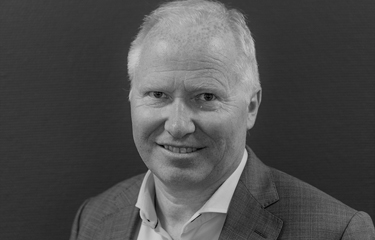Klepp, Norway-based aquaculture services and equipment provider AKVA Group received orders totaling NOK 709 million (USD 69.4 million, EUR 64.1 million) in the first quarter of this year, down from a record NOK 1.1 billion (USD 107.7 million, EUR 99.5 million) in Q1 2019, with a slow start to the year made by its Land Based Technology (LBT) business segment.
The Q1 orderbook figure does not include the NOK 100 million (USD 9.8 million, EUR 9 million) deal made last month for the delivery of its patented next-generation Tubenet sea lice solution to seven locations in Norway.
According to AKVA’s report for Q1 2020, on a trailing 12-month basis, the group’s order intake stands at NOK 1.65 billion (USD 161.5 million, EUR 149.3 million) – which CEO Knut Nesse said was still at a high level – after adjusting for the loss of land-based contracts in the fourth quarter of 2019. Of this, NOK 605 million (USD 59.2 million, EUR 54.7 million), or 37 percent, is related to LBT projects.
“We remain fully focused on our new RAS [recirculating aquaculture system] strategy and we are working on several prospects there,” Nesse said.
The quarter ended with revenues of NOK 752 million (USD 73.6 million, EUR 68 million), down from NOK 852 million (USD 83.4 million, EUR 77.1 million) at the end of Q1 2019.
The company’s Nordic-region orders for the quarter totaled NOK 483 million (USD 47.3 million, EUR 43.7 million), compared to NOK 633 million (USD 62 million, EUR 57.3 million) in Q1 2019, while its LBT-segment orders at the end of the quarter was just NOK 10 million (USD 979,137, EUR 904,671) – versus NOK 300 million (USD 29.4 million, EUR 27.1 million) a year previously.
The Q1 revenue from the Americas region amounted to NOK 138 million (USD 13.5 million, EUR 12.5 million), compared to NOK 145 million (USD 14.2 million, EUR 13.1 million). However, its Europe and Middle East (EME) Q1 revenues were at their highest-ever level – NOK 132 million (USD 12.9 million, EUR 11.9 million), up from NOK 74 million (USD 7.2 million, EUR 6.7 million).
Depreciation and amortization for the quarter remained at NOK 48 million (USD 4.7 million, EUR 4.3 million), while earnings before interest and taxes (EBIT) decreased from NOK 49 million (USD 4.8 million, EUR 4.4 million) to NOK 38 million (USD 3.7 million, EUR 3.4 million). The quarter’s profit before tax was down NOK 6 million (USD 587,413, EUR 542,848) year-on-year to NOK 32 million (USD 3.1 million, EUR 2.9 million).
AKVA’s three business segments – Cage Based Technology (CBT), LBT, and Software (SW) – all posted reduced revenues for the three-month period at NOK 657 million (USD 64.3 million, EUR 59.4 million), NOK 79 million (USD 7.7 million, EUR 7.1 million), and NOK 17 million (USD 1.7 million, EUR 1.5 million), respectively.
The main products provided through CBT include cages, barges, feed systems, sensors, nets, and net cleaning systems, while LBT specializes in recirculation systems and other technologies for land-based aquaculture and post-smolt facilities.
In terms of species, of the group’s total Q1 2020 revenue of NOK 752 million, some NOK 682 million (USD 66.8 million, EUR 61.7 million) was generated by technology and services for the salmon farming sector.
With regards to AKVA’s handling of the COVID-19 situation, the report states that the need for action was recognized early on and several measures were introduced to ensure the health and safety of the group’s employees and customers, and also to continue supplying its clients while maintaining a steady order intake.
Stating that while it is too early to tell the overall outcome of the crisis, AKVA said that it has seen moderate effects on ongoing business. It said it still has a record-high order backlog at the end of Q1 2020, despite the cancelation of two major RAS deliveries – in Chile with Cooke Aquaculture and with Nordic Aqua Partners (NAP) in China.
Nesse also explained that AKVA is one of 10 companies currently advising the Norwegian government on the positioning of aquaculture in the aftermath of the pandemic “to compensate for some of the setbacks COVID-19 is causing in our industry.”
“The bottom line is we believe that the authorities should focus on and strengthen where Norwegian salmon and aquaculture businesses have their natural comparative advantages, and they should do that by stimulating innovation through new licenses,” he said.
Those advantages, Nesse said, are not something that is easily duplicated elsewhere.
“The real competitive advantage of Norwegian salmon farming in the last 30 or 40 years has been farming in our own fjord systems,” he said. “That’s the thing that cannot easily be copied. Only a few regions of the world have that natural infrastructure. That is what needs to be strengthened.”
Nesse added that supporting and bolstering those parts of the industry that Norway benefits from will be important.
“We believe that the [authorities] should give rapid attention to this and issue permits to support the development. That will, at the end of that day, advance Norway’s natural advantage,” he said. “It will also help promote the focus on sustainable fish farming with new innovative ways of farming. That is our perspective of what can be done here in a more dynamic way in the months and years to come.”
Photo courtesy of AKVA Group







